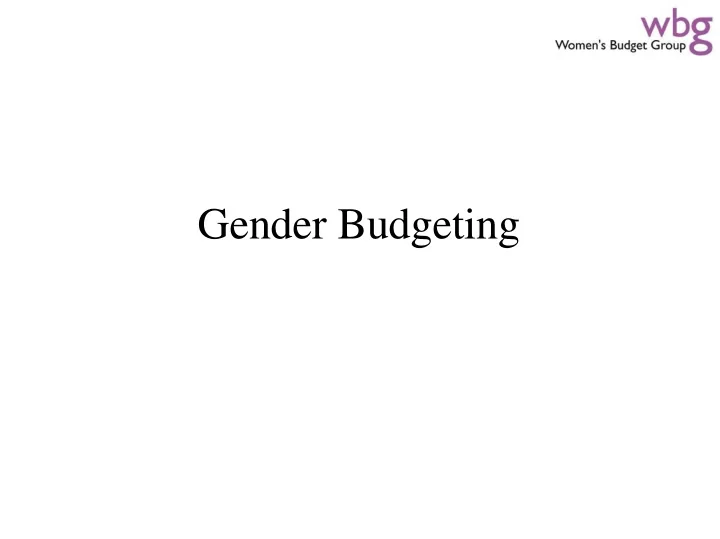

Gender Budgeting
Gender budgeting is • Analysing any form of public expenditure, or method of raising public money, from a gender perspective. • Identifying the implications and impacts for women and girls as compared to men and boys • Is not a separate budget for women
Aim to • Highlight the gap between policy statements and the resources committed to their implementation, ensuring that public money is spent in more gender equitable ways
Ways of introducing gender analysis into the budgetary process • Making gender visible • Auditing revenue and expenditure • Gender impact assessment • Gender mainstreaming • Benchmarking
Gender impact assessment • Analytical attention needs to be focused on the individual as well as the family level • Consideration for the longer-term consequences of policy is essential • Analysis must extend to the unpaid, caring economy • Differentials in women and men’s responses to the economic incentives need to be taken into account
Gender budgeting can cover • Whole budget • expenditure of selected departments or programmes • expenditure on new projects • selected forms of revenue (taxes, user fees etc) • changes in the tax system • implementation of new legislation
• Gender budgeting can be used in any phase of the budget cycle – planning and identify objectives – appraisal to identify financial allocations to meet objectives – audit to identify any misappropriation of money – evaluation of the extent to which objectives have been met
Questions in gender budgeting • Who is the recipient? • How is spending/revenue distributed? – What are the implication in the short and long term for the gender distribution of resources – paid and unpaid work • is provision adequate to the needs of women and men • How does policy affect gender norms and roles
• How is gender taken into account in policy formulation, design and implementation? • What priorities are given to reducing gender inequality? • Are specific targets for gender equality being met?
Requirements • Statistics disaggregated by sex – expenditure and revenue – unpaid caring economy – micro analytic model of economic and other behaviour sensitive to gender differentials • Sensitivity to gender segregation, cultural practices and gender norms and the impact that policy has on supporting or reconstructing these.
• Co-operation across government agencies and across the policy process • Awareness of the scope of gender issues and ability to search out more hidden aspects of gender inequality • Tools to assess the aims and priorities attached to policy • Awareness of complexity of gender inequalities when setting targets • Ability to locate the policy and other influences on particular social phenomena
Case studies • The New Deal Programmes • The Working Families Tax Credits (WFTC)
Recommend
More recommend